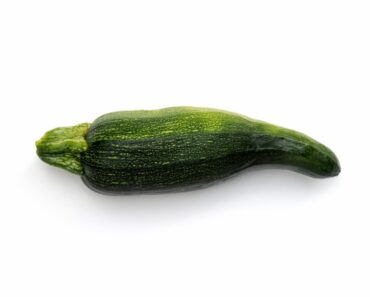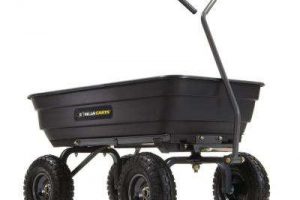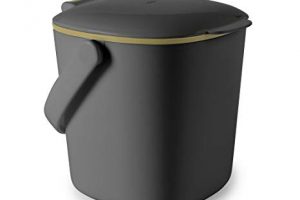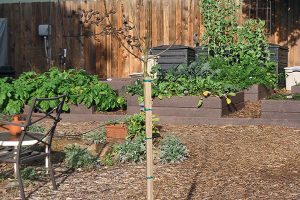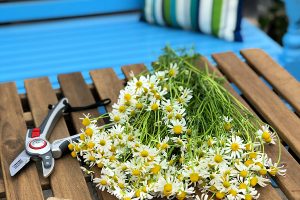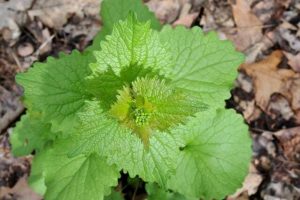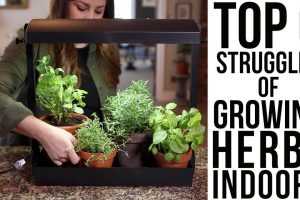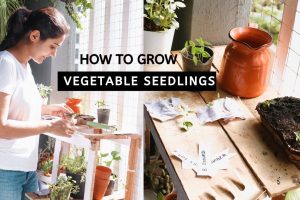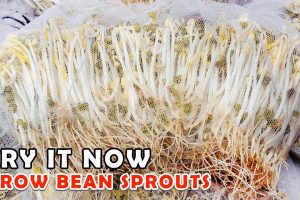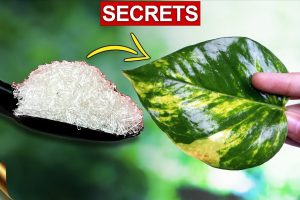
There is a surprising amount of gardening that can be done on the veg patch in winter. Yes, it’s possible that the ground will be frozen (or, more likely, very wet), potentially for long periods of time. But there are plenty of hardy crops that can be picked or planted and winter is a good time for soil preparation.
And as soon as the last words of another off-key rendition of Auld Lang Syne fade into the distance and the fireworks of new year’s eve have turned to dust and soggy cardboard, it’s time to dig out your seed trays and begin the new year in style by sowing some onions indoors. It surely beats watching Mary Poppins for the umpteenth time…
More fruit and veg gardening advice:
- Get growing edibles in winter
- Charles Dowding’s top tips for growing winter veg
- Five of the best winter vegetables to grow
Protect your precious crops

Check netting
As winter progresses, the chances of pigeons taking a fancy to your leafy winter crops increases, especially as temperatures plunge or snow falls. It’s good to check your netting each time you’re out in the garden in winter, because if it slackens off then gaps can appear and birds can get tangled up in it. Pull the netting tight then secure it with your preferred method. Draping the netting over canes and weighing it down with bricks or tent pegs is one of the simplest ways.
Keep an eye on stored crops
If you had a glut of apples, onions or potatoes and are still working your way through them, keep checking for any slowly-rotting crops that can quickly spoil the others. Put them on the compost heap or in your garden waste recycling bin. In the case of potatoes, the smell will alert you to there being a bad one in storage. If some stored onions are starting to sprout, move the others somewhere cooler or chop them up and freeze them.
Protect cauliflowers from frost
Summer cauliflowers such as ‘Clapton’ or ‘Nemo’, sown or planted late in summer, may still be maturing at the beginning of winter. Place a cardboard box or layer of fleece over the curds if frost is forecast, to stop them being spoiled. Winter cauliflowers such as ‘Triomphant’ or ‘Walcheren Winter’ are ready to harvest when the curds are compact and white in colour. If they’ve turned yellow, they are past their best. If heavy snow is forecast, try the cardboard box method of protection, to protect the curds from excess wet.
Keep on harvesting

Harvest winter brassicas
There’s something almost counter-cultural about harvesting brassicas in the winter months. It might be cold, wet, dull, dark, miserable, frosty (insert the things you don’t like about winter here!) but it’s also time to go and gather something fresh and nutritious from outside. What a pick-me-up! Harvesting is surely one of gardening’s greatest joys and it continues even when it seems like the world is sleeping.
Pick Brussels sprouts as and when you need them from the stalks (and don’t forget the tops are tasty too if they haven’t been pecked to pieces by pigeons). Keep pulling fresh, cold-busting strands of kale foliage from the outside of the plant and cut off winter cabbages at the base with a sharp knife, and remove a few outer leaves to reveal a crisp, crunchy centre. Then get creative in the kitchen. It’s a great way to spend a winter’s day off.
Lift winter root crops
Parsnips, carrots, swedes and beetroot can be harvested throughout winter, provided the soil isn’t too frozen to lift them up. Make carrot and beetroot harvesting a priority because these are the root crops most sensitive to winter wet, especially if your soil is slightly heavy. Parsnips and swedes will just keep getting sweeter, the longer they are in the ground, so just harvest them as and when you need them. Carrots and beetroot can be mulched with straw to stop them getting too wet, if you haven’t got space to harvest them all in one go.
BBC Gardeners’ World Magazine subscribers save 10% all year round on garden shopping*
As part of your subscription, you can enjoy a 10 per cent saving on your shopping from more than 25 carefully chosen online partners.
Browse the full list of suppliers where you can save money, and get your discount codes.
*Excludes delivery and some products, not valid with any other offer.

Start some new crops

Plant bare-root fruit
Anyone who planted fruit trees or bushes in the spring or summer of 2022 (like me) will either have a very high water bill or plants that have had levels of stress similar to a football manager facing relegation. It’s much easier to get them in the ground in winter and there is also more choice if you buy bare-root plants from a fruit specialist. Fruit can be a very handy answer for semi-shaded spots in the garden. Gooseberries, raspberries and blackcurrants will grow and crop surprisingly well in semi-shade.
Plant bare-root fruit when the soil is dry enough to not stick to your spade. Dig a hole that can comfortably accommodate the roots without having to squash them in the hole. Firm the plants in well with the ball of your foot and add a 5cm thick mulch of rotted garden compost.
Sow onions
What a cracking job to ‘escape’ and do if you’ve had enough of parties, relatives and repeats of the same old movies! Late-December to early-January is a good time to sow onions, especially in order to have some really good-sized bulbs to harvest at the end of summer. Sow them in module trays filled with peat-free multi-purpose compost, sowing three seeds to each module.
Cover the seed with vermiculite, then water them and keep somewhere well-lit at 10-15°C. You can leave the multiple seedlings to grow in the same module before transplanting the whole clump into individual pots or new modules, before hardening them off for a couple of weeks, then planting out the clumps in spring.
Force rhubarb
Of all the things to do in the garden in winter, few give such delicious results. Don’t worry if you haven’t got a spare cave underneath your garden. A large pot weighed down with a brick is all that stands between you and a sweet harvest that feels like you’ve managed to cheat the seasons.
Force clumps of rhubarb that have been in the ground for three or four years and haven’t been forced before. Young clumps can be exhausted by forcing and crop poorly. To force rhubarb, clear the soil around the base of the plant, removing weeds and old growth from last year.
Apply a 5cm thick mulch of compost around the base of the plant, then cover the whole clump with a dustbin, large bucket, or large pot. If you use a plant pot as a cover, cover the drainage holes to exclude light. In eight weeks, you’ll have some long, sweet, pink shoots to harvest. If you have it, pile up straw around the outside of the cover to provide insulation and you might be able to harvest a week or so earlier.
Thrifty tip
Gather all your old packets of seeds together and sort them out so you know what you need to buy next spring. It may be that you’ve already got the majority of things that you want to sow next year. If you are a disorganised gardener (like me) then by the time you’ve gathered together all the ‘half-sown’ seed packets from shelves and jacket-pockets, you might be surprised by how much you’ve already got for next year. Check the expiry date on the packets. As a rule of thumb, I don’t bother sowing any seeds that are from the year before last, or if I do, I’m sowing as an experiment rather than with expectations of good levels of germination!
Plan for spring

Cover and warm soil
This is one of those tasks that will give you a warm glow inside, like covering the car windscreen before a frosty night. That same feeling of ‘winning’ when you don’t have to scrape ice off the windscreen will be replicated when you remove covers from your soil at the end of winter to reveal a clear, weed-free, warmed up patch of soil, all ready for early planting and direct sowing.
If you cover your soil with cardboard, you don’t even have to remove it. Pile a 10cm thick layer of soil or compost on top of it to weight it down and you can plant or sow directly into it in spring without having to turn over the soil, which should limit the number of weed seedlings that germinate in it.
Weed-suppressing fabric or polythene can also be used to cover soil but they will need to be removed in spring and clear polythene won’t suppress weeds very well. Covered soil will be ideal in early March for making an early direct sowing of beetroot, spinach, chard, salad leaves and – if the soil is free-draining – carrots and parsnips.
Chit seed potatoes
Forget pots of early crocus and daffodils beginning to bloom, a collection of eggboxes full of seed potatoes beginning to sprout on a windowsill is one of the most exciting reminders that spring is coming soon! Start off your potatoes in a cool, well-lit, frost-free place indoors. A room that isn’t centrally heated is ideal.
Early and maincrop varieties of potato will slowly start to produce fat shoots that will help them get a head start once they are planted out. Start chitting early varieties of potato such as ‘Rocket’ and ‘Swift’ (ones you want to harvest as new potatoes) in February, for planting out six weeks later.
Start chitting maincrop potatoes such as ‘Maris Piper’ and ‘Sarpo Mira’ (ones that you harvest when the tubers are large in early autumn) a couple of weeks after your early ones. Don’t forget to put labels in each tray or eggbox or write the variety name on the side of it. It’s so easy to get potato tubers muddled up when you’re planting different varieties. Place the tubers ‘rose-end’ up. This is the end that has a cluster of ‘eyes’ that will form shoots.
Growing Greener
Ash from bonfires or wood burners is a useful plant food and soil improver. As long as the ash is purely from untreated wood, spread it over the soil where you are going to grow brassicas because it will increase the alkalinity of the soil. If the ash has been generated from young branches with high levels of sap it will be very nutritious, with good levels of potassium.
Store it in a container with a lid, inside a shed or garage to keep it dry. To use it as a food, sprinkle it around the base of fruit bushes (except blueberries) and trees towards the end of winter, just before buds start breaking. For large amounts of ash, spread it over the soil where you are going to grow brassicas such as swedes, cabbages and kale, at around 50g per square metre at the end of winter.




